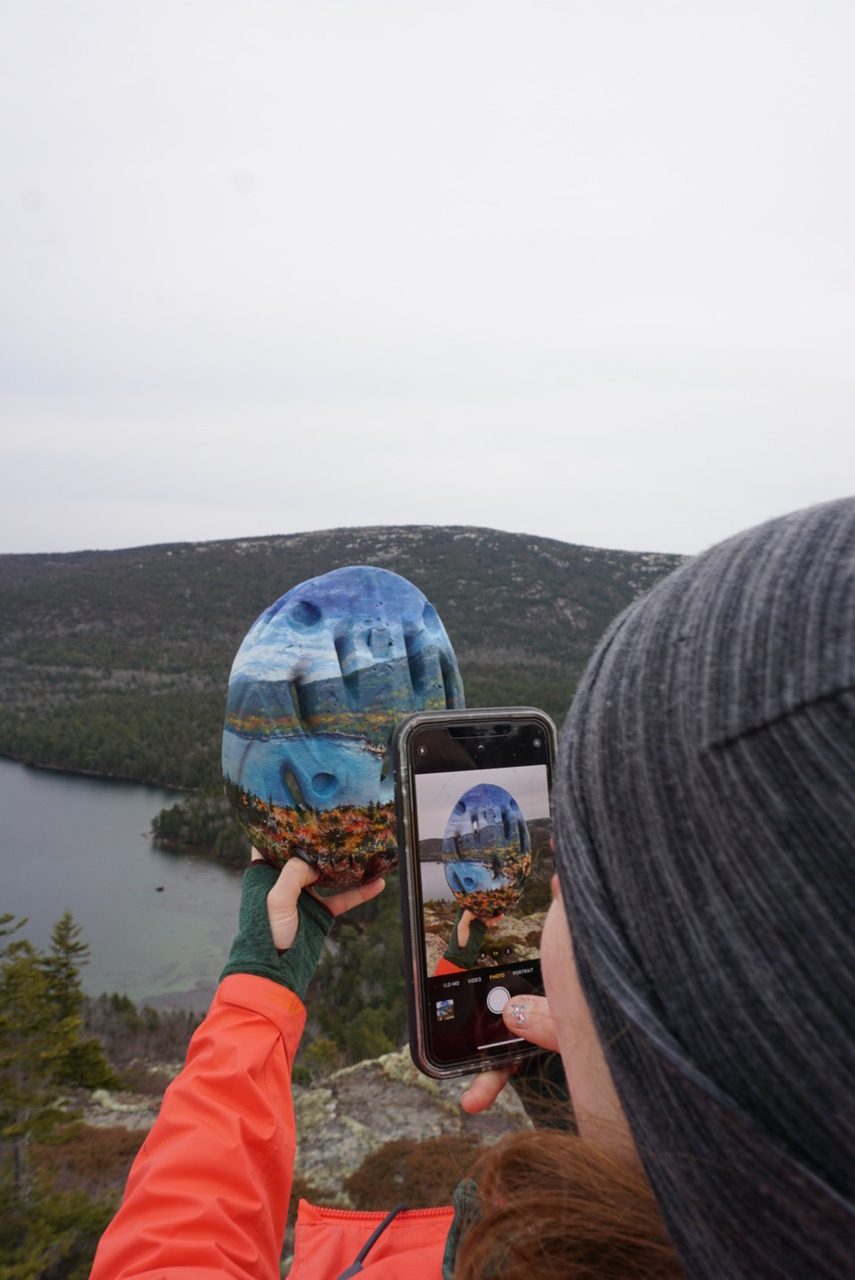Naturalist and eco-artist Mariah Reading ’16 transforms found items into landscape paintings
April 9, 2021
 Courtesy of Mariah Reading '18
Courtesy of Mariah Reading '18Mariah Reading ’16, an eco-artist and professional naturalist who cycles through homes and jobs with the seasons, embodies Bowdoin’s interdisciplinary teaching between work and her art. Preserving parklands in the summer and finding work in the winter, Reading’s seasonal lifestyle is one of the biggest influences on her art. By painting on forgotten or littered items she finds in national parks, Reading reclaims the natural spaces she inhabits and turns debris into an ode to the landscape.
At Bowdoin, Reading was engaged in a host of activities outside of her visual arts major, and she credits the College with fostering her interest in a wide variety of curricular experimentations.
“I really love Bowdoin because it allowed me to do all of the things,” Reading said in a phone interview with the Orient. “I don’t see myself as a one-discipline person. I think having a unique venn diagram of passions is really important, and I think Bowdoin was the perfect school for that.”
Inspired by a project she completed during her senior year, Reading’s work forces viewers to consider the intersection between human waste, the natural world and visual art. Her most recent project, “Worn Landscapes,” reflects on these themes.
“‘Worn Landscapes’ [was] all [done] on clothing items that I found throughout parks. I stretched them around canvas, [and] I noticed that sweatshirts and socks and hats kind of had similar textures to actual stretched canvases, so it’s kind of my play on … that,” Reading said. “[I’ve painted on] these things that we wear throughout our time in these landscapes, but then [the project] also [considers] how our human impact on these landscapes contributes to the erosion and wearing down of the landscapes themselves.”
“Worn Landscapes” was released in early 2021—Reading’s first project since the start of the pandemic. While she had to give her gallery talk over Zoom, she was still grateful for the opportunity to share her art in a time of isolation.
“Getting to do this online gallery talk made [the show] so much more accessible,” said Reading. “I had friends and family log onto the Zoom link from all across the United States, and it felt like a celebration. It was really exciting to see all of their faces.”
Before committing to her dual trajectory as an artist and naturalist, Reading worked as an art teacher at the Crane Country Day School in Santa Barbara, CA. However, she soon found herself craving a less static lifestyle. After volunteering for Arts in the Parks at Guadalupe Mountains National Park in Texas, Reading quickly realized she wanted a career change and decided to pursue eco-art and nature-related work in a full time capacity.
When looking to the rest of 2021, Reading finds her future unusually planned: a naturalist position at Voyageurs National Park in Minnesota awaits her this summer, after which she will complete residencies at the Guadalupe Mountain National Park and the Sitka Center for Art and Ecology in Oregon. With her five-year anniversary of graduating from Bowdoin approaching, Reading still holds onto a piece of advice Associate Professor of Art Jackie Brown offered her during senior studio.
“Just keep making, keep creating—even if you have another job, continue that practice and apply it to everything that you can,” Reading said. “I really took that to heart.”

Comments
Before submitting a comment, please review our comment policy. Some key points from the policy: